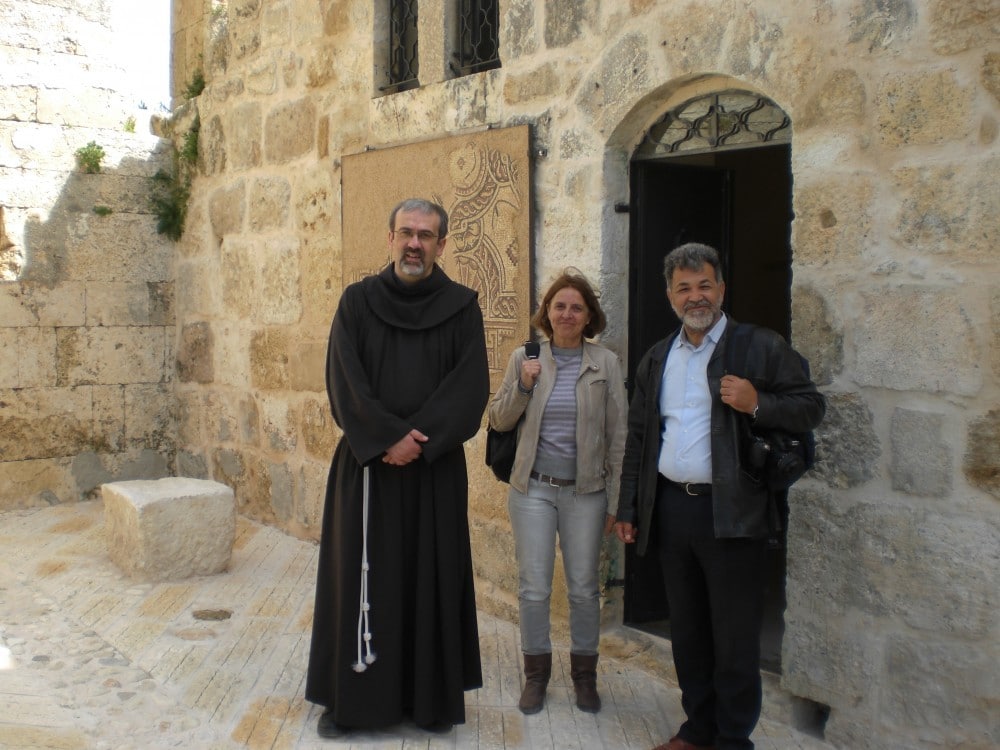
Interview with the expert Carla Benelli
A spot still untouched by mass tourism notwithstanding the nearby Roman archaeological site of immense value, the tomb presumably belonging to John the Baptist and the breath-taking landscapes: Sebastia, the town founded by Herod the Great on the site of old Samaria in honour of Emperor Augustus, rediscovers today its own cultural heritage thanks to the interventions of ATS Pro Terra Sancta. The Association has taken action for several years now aimed at the conservation and valorisation of the extraordinary archaeological and cultural heritage. The works for the historical centre conservation go hand in hand with a continuous work of vocational training for the local community, especially women and young people. The town, excluded for years from the main tourist circuits and pilgrimages, is now preparing to welcome tourists and pilgrims with its recently restored, all-to-be-discovered historical centre. In the last few months, ATS Pro Terra Sancta has opened a guesthouse and organised vocational training courses for the people of Sebastia so that they can work as tourist guides and offer their handmade products to the tourists.
Carla Benelli, art historian and coordinator for the project “Sebastia – between past and present” explains the importance of safeguarding the Palestinian cultural heritage and the actions taken in Sebastia thanks to the contributions by institutions and private donors.
What does the conflict mean for the cultural heritage?
The harsh conflict affecting the entire area for years has had an inevitably negative impact also on the region rich cultural heritage and affects deeply its conservation. In addition to this, the territory is still vastly subjected to military occupation and is not sufficiently equipped to manage correctly its historical and artistic resources.
Are there cultural and archaeological resources under Palestinian direct control?
Yes, but limited to a small territory which has its own importance, anyway. Let’s think about Bethlehem with the Nativity Church, for example, Jericho, with one of the oldest human settlements in the world, the mosaic floors of the Byzantine churches, the Villa of Herod the Great, the Umayyad Palace with the tree of life mosaic, Hebron with the Sanctuary of Abraham and the Oak of Mamre or the old town of Nablus. Or Sebastia, with its immense heritage.
What has been done to safeguard Sebastia’s cultural heritage?
The interventions next to the main mosque, which dates back to the Middle Ages, have already avoided the collapse and neglect of several Crusader buildings within the historical centre. These buildings, characterised by degradation and structural instability, have been restored in line with their historical value, to welcome social activities promoted by the Municipality of Sebastia together with the Palestinian association Mosaic Centre: a youth centre, a guesthouse and a tourist information centre with local products on sale. In 2010, then, always hiring local manpower, we extended the works for the restoration of the historical centre to enlarge the guesthouse and we have created vocational training courses for the locals, especially women and young people, for the production of local products and service to the tourists. In a while, we will launch the works to restore a great Crusader hall that will become the town museum.
Why did ATS Pro Terra Sancta decide to bring its action to Sebastia?
The involvement of ATS Pro Terra Sancta was much wanted and launched by Father Michele Piccirillo, archaeologist of the Studium Biblicum Franciscanum, recently passed away. During a number of visits, with his scientific support, we understood the value of the buildings and the urgency to intervene. Father Michele Piccirillo, then, was much interested in involving the locals, besides the value of the restoration in itself.
What are the difficulties in managing and preserving sites in Palestine?
The Palestinian National Authority, in charge of the cultural heritage conservation since 1994 through the Archaeology Department of the Ministry for Tourism and Antiquities, has to face serious problems of management and maintenance with inadequate instruments and norms. The sector of the Palestinian cultural heritage conservation suffers under the lack of professionals, in all the institutions involved in managing the cultural heritage and the situation is even worse because the various institutions are incapable of team-working. The field of training is still much lacking and local Universities can’t yet create courses of various levels for the development of the necessary competences.
Is the “new” preferred to the heritage?
Let’s say that on the one hand, big portions of the cultural heritage are disregarded and are left to degradation. The other problem is the lack of control, by the Palestinians, of the areas surrounding their territories: since they cannot expand on the territory, they build on the historical centres, putting at risk part of the cultural heritage.
Which spots are particularly degraded?
In 2002, the town of Neblus, which dates back to Roman times, suffered inestimable damages and destruction. Historical religious buildings were hit, together with ancient factories and a number of houses in the historical centres. The historical centre of Bethlehem was damaged many times, and its most representative historical and religious symbol, the Nativity Church, still bears the signs of the conflict. Also the rupestrian church of Abboud was destroyed. The real problem lies in the lack of planning, more than in the attacks and bombings. In Jericho, for example, they built a cableway next to the 10000-year-old town. Since 1967 there has been a complete lack of maintenance and protection: the Palestinian cultural heritage has been abandoned for ages.